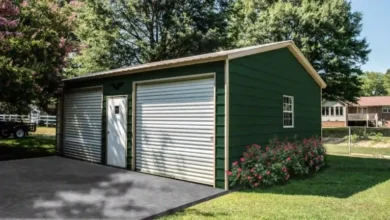When it’s time for a new roof, one big question comes up:
What type of roof lasts the longest?
You want something strong. Something that can handle wind, rain, hail, and heat. And something that won’t fall apart after just a few years. That’s why durability matters and why many homeowners turn to a trusted Columbia City roofing company for help choosing the right material.
Here’s a simple guide that ranks the most durable roofing materials, along with their pros, cons, and how long they last.
1. Slate Roofing
Slate is one of the toughest roofing materials out there. It’s made from real stone, which means it’s super strong and lasts a very long time.
- Lifespan: 75–100+ years
- Pros: Fireproof, weather-resistant, looks great, lasts forever
- Cons: Very heavy, hard to install, expensive
Slate roofing is a big investment, but it may be the last roof you ever need.
2. Metal Roofing (Standing Seam or Stone-Coated)
Metal roofs come in different styles like standing seam, stone-coated steel, and copper. They’re made to take a beating from hail, high winds, and fire.
- Lifespan: 50–70+ years
- Pros: Fire-resistant, lightweight, strong, reflects heat
- Cons: Can be noisy in heavy rain, dents from large hail, higher upfront cost
Many metal roofs also have a Class A fire rating and Class 4 impact resistance, which makes them a great pick for stormy areas.
3. Synthetic Roofing (Slate or Shake Look-Alikes)
Synthetic shingles are newer, but they’re quickly gaining popularity. They’re made from rubber or plastic and are designed to look like wood shakes or slate.
- Lifespan: 40–50 years
- Pros: Lightweight, eco-friendly, impact-resistant, lower maintenance
- Cons: Can be pricey, not always available everywhere
These materials often have top ratings for hail and wind without the heavyweight of natural stone or wood.
4. Concrete and Clay Tiles
Concrete and clay tiles are known for their strength. They can handle heat and storms and are common in areas with wild weather.
- Lifespan: 40–60+ years
- Pros: Great in hot climates, fire-resistant, long-lasting
- Cons: Very heavy, may need extra roof support, more costly to install
They also hold up well in salty, coastal air. Just make sure your roof is built to handle their weight.
5. Luxury Asphalt Shingles
Not all asphalt shingles are the same. Luxury shingles are thicker and stronger than basic 3-tab or architectural shingles.
- Lifespan: 30–40 years
- Pros: Affordable compared to premium materials, decent durability, easier to install
- Cons: Still more prone to damage than metal or slate, needs regular maintenance
Luxury shingles are a step up for homeowners who want better protection without going all-in on high-end materials.
6. Cedar Shake Shingles
Cedar shakes offer a natural look and solid protection if they’re installed and maintained properly.
- Lifespan: 30–40 years
- Pros: Beautiful, good in moderate climates, eco-friendly
- Cons: Needs frequent upkeep, not ideal for fire-prone areas, can rot or crack over time
To get the most life out of a cedar roof, choose high-quality materials and stay on top of maintenance.
So… What’s the Most Durable Roof?
If we’re just talking about strength and longevity, slate comes out on top. But metal roofs are a close second and a lot more practical for most homes.
Here’s a quick durability ranking:
- Slate (75–100+ years)
- Metal – standing seam or stone-coated (50–70+ years)
- Synthetic slate or shake (40–50 years)
- Clay or concrete tile (40–60 years)
- Luxury asphalt shingles (30–40 years)
- Cedar shake shingles (30–40 years)
Of course, the best roof for your home also depends on your local weather, your budget, and how much upkeep you’re okay with.
Final Tip:
Even the strongest roof can fail if it’s not installed right. That’s why choosing a trusted contractor is just as important as picking the material.





